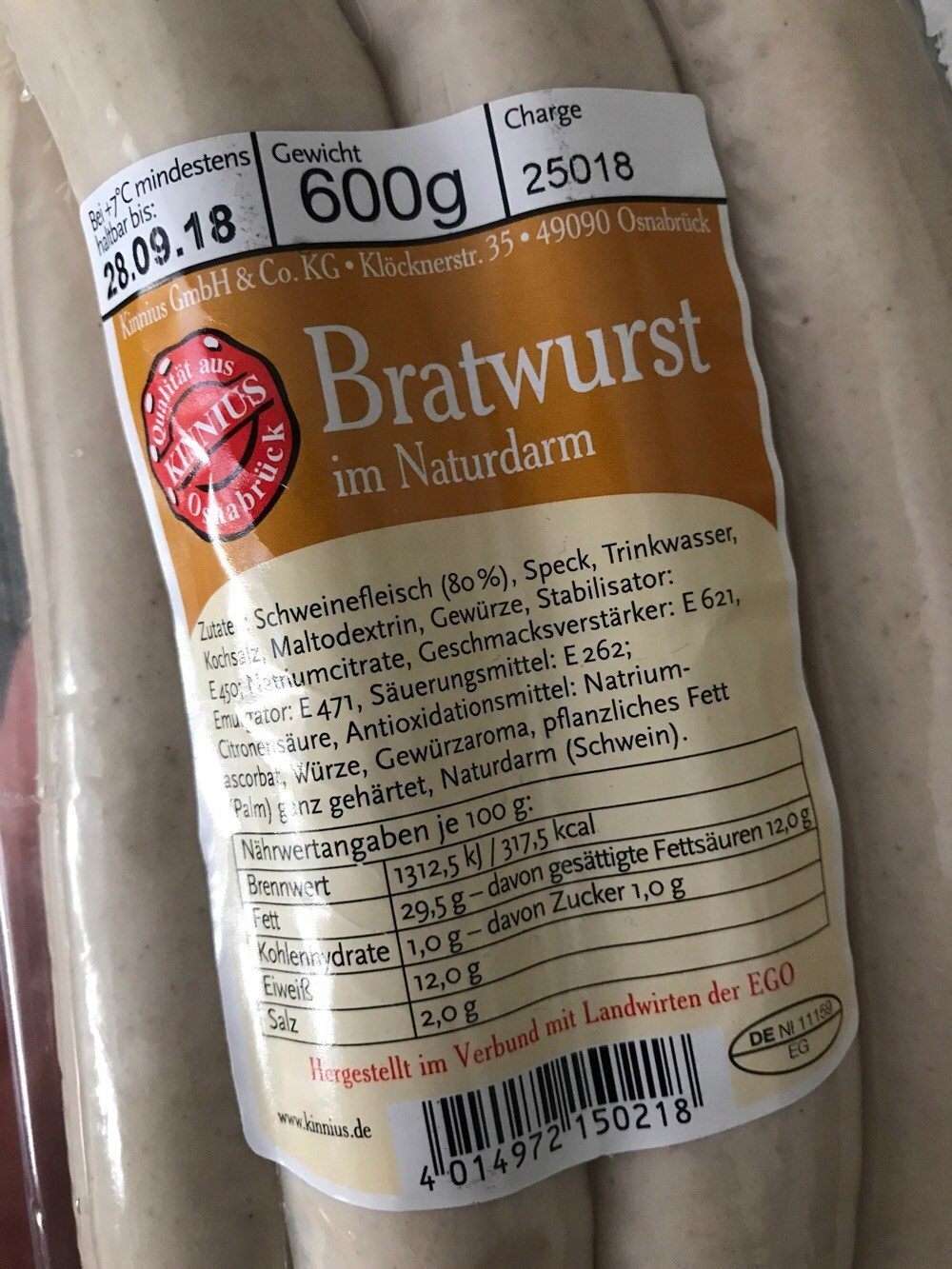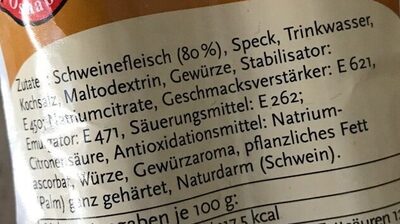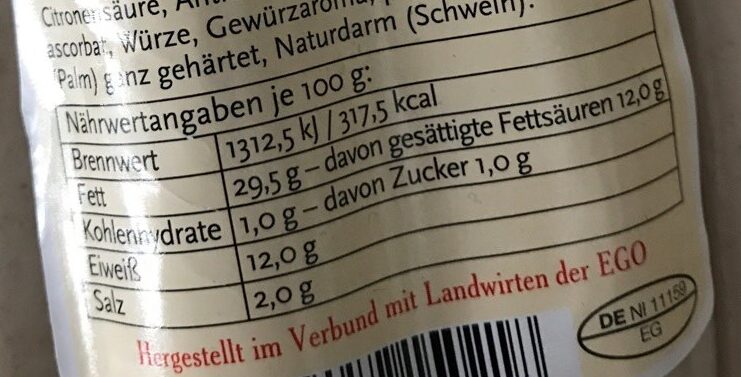Bratwurst im Naturdarm - Kinnius - 600 g
This product page is not complete. You can help to complete it by editing it and adding more data from the photos we have, or by taking more photos using the app for Android or iPhone/iPad. Thank you!
×
Barcode: 4014972150218 (EAN / EAN-13)
Common name: Bratwurst vorgegart
Quantity: 600 g
Packaging: Plastic
Brands: Kinnius
Categories: Meats and their products, Meats, Prepared meats, Sausages, German sausages
Traceability code: DE NI-11159 EG
Matching with your preferences
Environment
Packaging
Transportation
Report a problem
Data sources
Product added on by date-limite-app
Last edit of product page on by roboto-app.
Product page also edited by cjk, packbot, stivolonski.
If the data is incomplete or incorrect, you can complete or correct it by editing this page.










